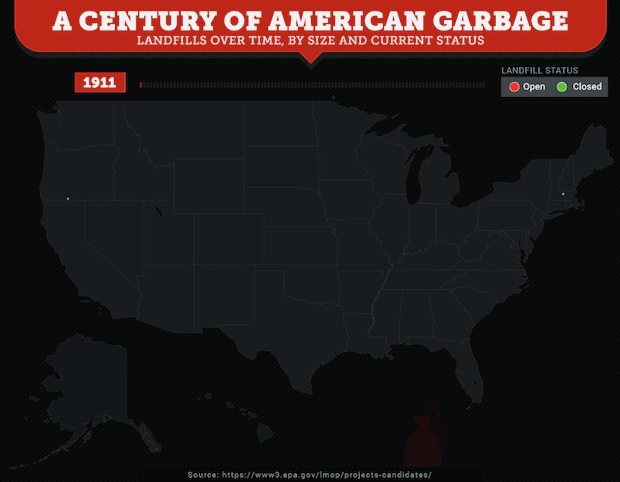Why Landfill Diversion is Critical
“Landfill Diversion” is an effort to minimize “garbage” and to send as little as possible to the landfill. Landfills are problematic because not only do they take up habitat space, but their presence degrades local systems of water, plants, animals, and soil.
So, while landfills help to keep our community clean, we should keep in mind that they pose serious threats to the biosphere, and the creation of more landfills as the old ones fill is clearly not sustainable.

When an individual takes responsibility for limiting the amount the “garbage” she creates, her concept of “garbage” naturally shifts. In fact, what constitutes garbage is highly subjective; wealthy societies discard things that others find useful, recyclable, or restorable. Working toward a zero-waste lifestyle helps reduce our reliance on landfills and their negative impact on those who live and work around them.
Promoting a Circular Economy: Ideally, a circular economy is a system in which materials never become waste. The goal is for the life cycle of products to be extended. When a product reaches the end of its life in one form, its materials are kept within the economy through recycling, thereby creating further value.
Conserving Natural Resources: Once an item is sent to the landfill, it cannot be used again; it’s done. Thus, the natural resources and energy that went into its initial production are wasted. Recycling materials is the best way to conserve non-renewable resources which cannot be replenished easily and require more nonrenewable resources to extract them.
Reducing Water Pollution: When rainwater filters through the waste in a landfill, it leaches, or draws out, chemicals from those wastes, creating a toxic soup of harmful chemicals, many of which are known to cause cancer and harm human and nonhuman health. This toxic soup is called leachate. When leachate seeps from a landfill, it contaminates the ground water beneath the landfill. This contaminated groundwater is known as a plume. The normal movement of ground water causes a leachate plume to extend away from the landfill, often for miles.
Reducing Greenhouse Gases: Our landfills are a major source of greenhouse gas (GHG) emissions and water pollution. In fact, municipal solid waste landfills in the U.S. are the third-largest source of human-generated methane following fossil fuel production and animal confinement (“animal agriculture”). Methane is a potent GHG that is estimated to be at least 30 more effective than CO2 at trapping heat in the atmosphere. Also, landfill gases pose health risks to humans and nonhuman animals.
According to the E.P.A., FOOD is the single largest category of material in municipal landfills.
When organic waste (food, plant matter and natural fibers) is buried in landfills, it undergoes anaerobic (without oxygen) decomposition that generates “landfill gas” composed of roughly 50% methane (the primary component of natural gas) and 50% CO2. By contrast, when organic waste is exposed to oxygen, it decomposes with very little methane generated. Consequently, even if you aren’t a gardener, a backyard compost bin is one of the best ways to help reduce landfill gas and build healthier soil!
Shifting our cultural mindset:
What does it mean to “throw it out?” What is actually “disposable?” Is anything really “garbage?” For years, marketing has conditioned us to value convenience over the integrity of our biosphere. It’s easy to leave garbage in bags in a blue dumpster at the curb and have it magically whisked away, but if we are to prepare for the changes ahead, we might need to assume responsibility for our waste and dispose of it in ways that mimic nature where nothing is ever truly wasted. In nonhuman nature, what is given off as waste by one organism is used by another. In this way, “recycling” is an ancient concept.
In sum, we can become more aware that what we “throw out” are resources that can be used to make other things.